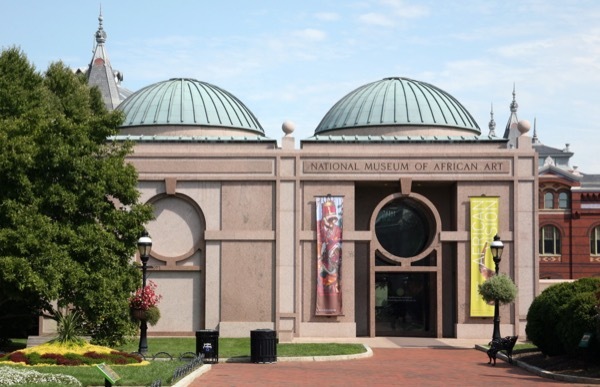This inviting little museum does not get the foot traffic of its larger, better-known sister Smithsonians, but that only makes for a happier experience for those who do visit. Find it by strolling through the Enid A. Haupt Garden, under which the subterranean museum lies, and enter via the domed pavilions, stopping first to admire the tall artwork marking the entrance, the colorful fiberglass and goldleaf “Wind Sculpture VII,” evocative of a ship’s sail.
Traditional and contemporary African music plays lightly in the background as you tour the dimly lit suite of rooms on three sublevels. The galleries rotate works from the museum’s 12,000-piece permanent inventory of ancient and modern art, spanning art forms and geographic areas. The museum also houses a collection of some 450,000 photographs.
A tour of the museum at any time turns up diverse discoveries: a circa 13th- to 15th-century ceramic equestrian figure from Mali; face masks from Congo and Gabon; or a 15th-century Ethiopian manuscript page.
The African Art Museum was founded in 1964, joined the Smithsonian in 1979, and moved to the Mall in 1987. If you descend to sublevel 3, you will reach the subterranean passage that takes you to the Ripley Center.






 About our rating system
About our rating system


